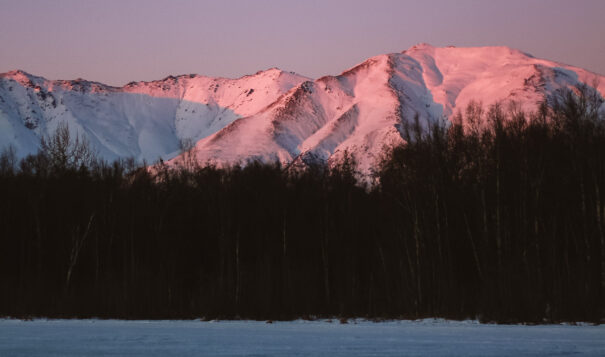Press Release
Three tribal consortia organizations join Bering Sea Interior Tribal Commission and 78 tribes in Urging Bureau of Land Management to retain protections on Alaska D-1 lands
 Canva Art
Canva Art
Fairbanks, Alaska (1/23/24) – In December three prominent tribal consortia organizations representing 118 federally recognized Tribes impacted by the BLM’s ANCSA 17 D-1 Environmental Impact Statement (EIS), released a joint letter asking the Secretary of the Interior Deb Haaland to retain all the D-1 protections asserting that “in this rapidly changing environment with so many future unknowns, it is in the public interest to adopt a precautionary approach that prioritizes the protection of the natural environment that underpins our subsistence resources, over the industrial exploitation of intact lands and pristine waters”.
On December 15th the Alaska Bureau of Land Management (BLM) released its Draft Environmental Impact Statement on ANCSA 17 D-1 lands (D-1 protections) that when finalized and implemented will recommend whether protections from development across 28 million acres in Alaska are maintained, modified, or removed by the Secretary of the Interior. This is a very large area of the State encompassing thousands of miles of salmon spawning and rearing watersheds and includes the ancestral lands of the Kawerak, Tanana Chiefs Conference and Association of Village Council Presidents tribal consortia organizations.
The Draft EIS document lists four Alternatives: one that would retain all D-1 protections (Alternative A); and one that would lift all D-1 protections (Alternative D); and two mid-level alternatives that retain some protections and lift some protections (Alternatives B and C).
The Tribal Consortia letter aligns with the Bering Sea Interior Tribal Commission’s position and the sign-on letter sent by seventy-eight Alaska Tribes which have now all asked Secretary Haaland to protect ancestral lands across the state, known as the “D-1” lands. “Our fathers, mothers, grandparents, and ancestors gathered, hunted, and fished on this land and we carry on these traditions today across these lands and watersheds that feed us.” said Melanie Bahnke, President and CEO of Kawerak, “It is our obligation to protect our traditional lands and longstanding cultural practices for our children, grandchildren, and those yet to come.”
D-1 lands in this EIS include BLM-managed lands in five BLM planning areas: Kobuk-Seward, Bering Sea-Western Interior, Bay, East Alaska, and Ring of Fire, which together contain critical watersheds with highly productive salmon streams, caribou calving grounds, tundra landscapes, coastal estuaries, moose habitat, and marshes important to migratory birds. The lands are also important hunting, fishing, and gathering grounds for more than 100 Indigenous Alaska communities. “Impacts related to climate change are affecting our communities’ ways-of-life and safeguarding critical D-1 lands and watersheds will help mitigate these impacts.”, said Vivian Korthuis, CEO of the Association of Village Council Presidents.
D-1 public land orders can only be lifted by the Secretary of the Interior if recommended in a BLM Resource Management Plan or an Environmental Impact Statement. BLM has finalized five management plans in these regions that recommended lifting all D-1 protections from BLM-managed land in these planning areas. Most of those plans were finalized decades ago and unfortunately did not consider impacts from climate change nor the impacts to Indigenous communities so the Biden administration announced this EIS process to analyze impacts and make recommendations to the Secretary of the Interior. The three tribal consortia organization joint letter is a call from Indigenous communities which will be most impacted by this decision asking the federal government to not open this important federally managed land to development.
“Our people have stewarded this land for millennia and we are calling on the Bureau of Land Management to honor our culture and traditions and protect these lands just as we have always done,” added Brian Ridley, Chief/Chairman of Tanana Chiefs Conference.
The letter closes with,
“We are grateful to the Biden Administration for your commitment to engage with our Indigenous leaders and conduct a thoughtful environmental review to evaluate the true impacts that lifting the D-1 protections could have on us, our communities, and our culture. We urge you to take action to retain the D-1 withdrawals to protect out ancestral and so the land and watersheds can continue to support the diverse ways of life among our Peoples for generations to come.”
Kawerak, Tanana Chiefs Conference and Association of Village Council Presidents join the 78 signing Tribes and the Bering Sea Interior Tribal Commission asking for approval of the no-action alternative to protect millions of acres of the nation’s most pristine land and to safeguard traditional landscapes that not only support food security but give essential meaning to our culture and way of life.
